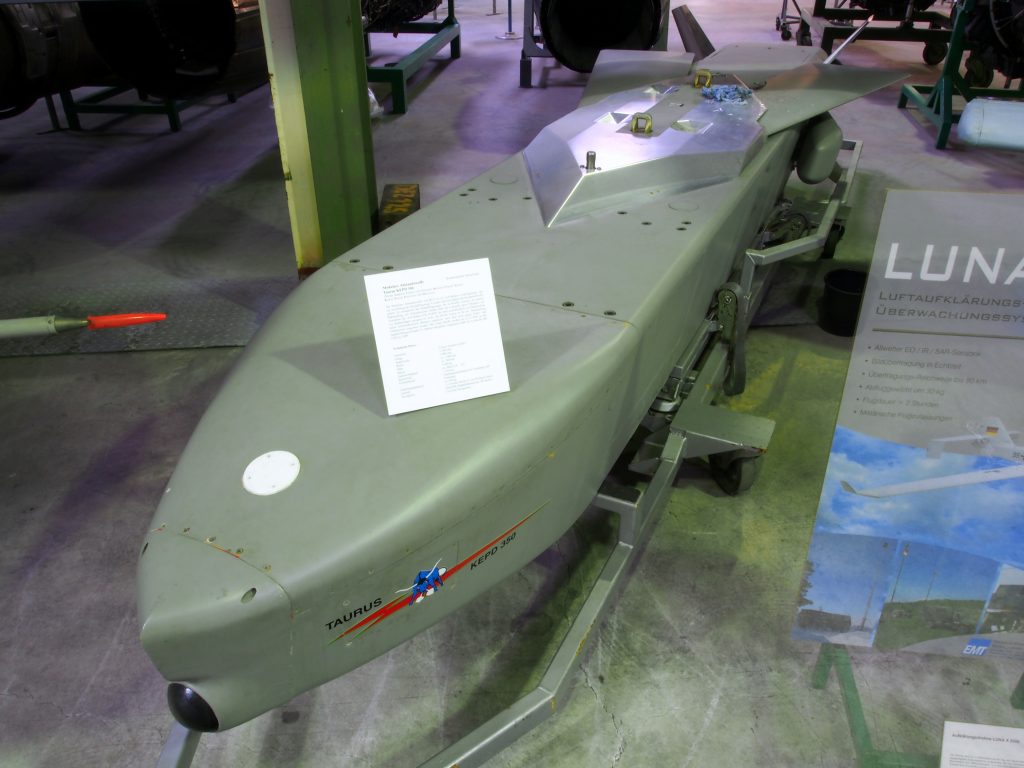
In a recent development reported by Reuters, new information has come to light regarding the German government’s deliberation over the provision of extended-range Taurus missiles to Ukraine. This revelation, however, underscores a potential geopolitical risk, as these munitions possess the capacity to reach Russian territories. Consequently, German Chancellor Olaf Scholz is actively exploring avenues to curtail the operational radius of these missiles, thereby effectively restricting their potential impact to Russian territories.
OverClockers, a Russian web portal, has conveyed insights from Ukraine’s envoy to Germany, Oleksiy Makeev, who has expressed dissent towards the concept of imposing constraints on the range of Taurus missiles. Makeev drew an analogy between the proposed range restrictions and the prohibition of a football team from advancing into the opposing side’s territory for penalty kicks, arguing that such limitations could prove counterproductive.
The discourse surrounding the potential delivery of Taurus missiles to Ukraine remains ongoing, with Ukraine actively soliciting support within the Bundestag for the acquisition of these advanced German long-range missiles. Addressing allegations of wavering determination in relation to the missile deployment, Chancellor Scholz has firmly asserted that his approach is rooted in prudence and circumspection, aimed at meticulously evaluating the implications of this substantial strategic move, as opposed to hasty and impulsive actions.
About the Taurus missile system
The Taurus missile system, a long-range air-to-surface ordnance, is a product of collaborative efforts between Taurus Systems GmbH— a partnership involving MBDA Deutschland GmbH and Saab Bofors Dynamics. With an operational reach exceeding 500 kilometers, this formidable weapon system is optimized for precision engagement against high-value targets.
The Taurus missile, measuring 5.1 meters in length and boasting a diameter of 1 meter, tips the scales at approximately 1,400 kilograms. Its payload capacity extends to a 500-kilogram warhead. The missile is equipped with a turbofan engine, enabling speeds of up to Mach 0.95.
Employing a fusion of inertial guidance and GPS navigation systems, the Taurus missile accurately homes in on its intended target. Additionally, its terrain reference system facilitates low-altitude flight trajectories, minimizing radar detection prospects. Evasion tactics further enhance the missile’s survivability by enabling it to dodge hostile air defense systems.
The Taurus missile has already demonstrated its operational prowess, having been effectively utilized by the German Air Force and the Spanish Air Force in combat scenarios spanning Afghanistan and Libya. Beyond these deployments, the munition has found export to South Korea, while other nations also contemplate its incorporation as a long-range striking asset.
A technological marvel, the Taurus missile system furnishes a robust deterrent against potential adversaries. Its extensive operational range and surgical precision confer it a pivotal role in bolstering aerial supremacy and safeguarding strategic interests for air forces seeking to project power effectively.
Comparing Taurus and Storm Shadow Missiles
The German Taurus missile and the British Storm Shadow missile are both cruise missiles tailored for aerial launch, conceived to infiltrate adversary air defenses and engage high-priority targets. These munitions share a payload capability of 500 kg and an operational reach extending beyond 500 km.
Yet, critical distinctions set these missiles apart. The Taurus missile is optimized for nap-of-the-earth flight trajectories, leveraging low altitudes to evade detection, whereas the Storm Shadow missile adopts elevated altitudes to evade hostile air defense systems.
In terms of guidance systems, the Taurus missile employs a terrain-following mechanism for navigation, while the Storm Shadow missile integrates a blend of GPS and inertial navigation systems.
Further divergence lies in their carrier platforms: the Taurus missile finds its host in the German Tornado fighter-bomber, whereas the Storm Shadow missile boasts compatibility with diverse British and French aircraft, encompassing the Eurofighter Typhoon and the Dassault Rafale.
Assessing Russian Countermeasures against Taurus Missile
Russia has brought forth its indigenous missile defense solution, the S-400 Triumph system, engineered to intercept and neutralize incoming projectiles, including the German Taurus missile. The S-400 system’s operational scope spans up to 400 kilometers, with a capacity to engage targets soaring at altitudes reaching 30 kilometers. Augmented by advanced radar arrays, the system’s multitarget detection and tracking capabilities establish a formidable bulwark against potential missile threats.
Electronic warfare [EW] tactics represent another avenue for Russia to potentially counter the Taurus missile. Russia boasts a storied legacy in the development and deployment of advanced EW systems, meticulously crafted to disrupt and incapacitate enemy communication networks, radar installations, and other electronic apparatus. Through strategic application of EW systems, Russia could conceivably impair the Taurus missile’s guidance mechanisms, effectively neutralizing its efficacy.





